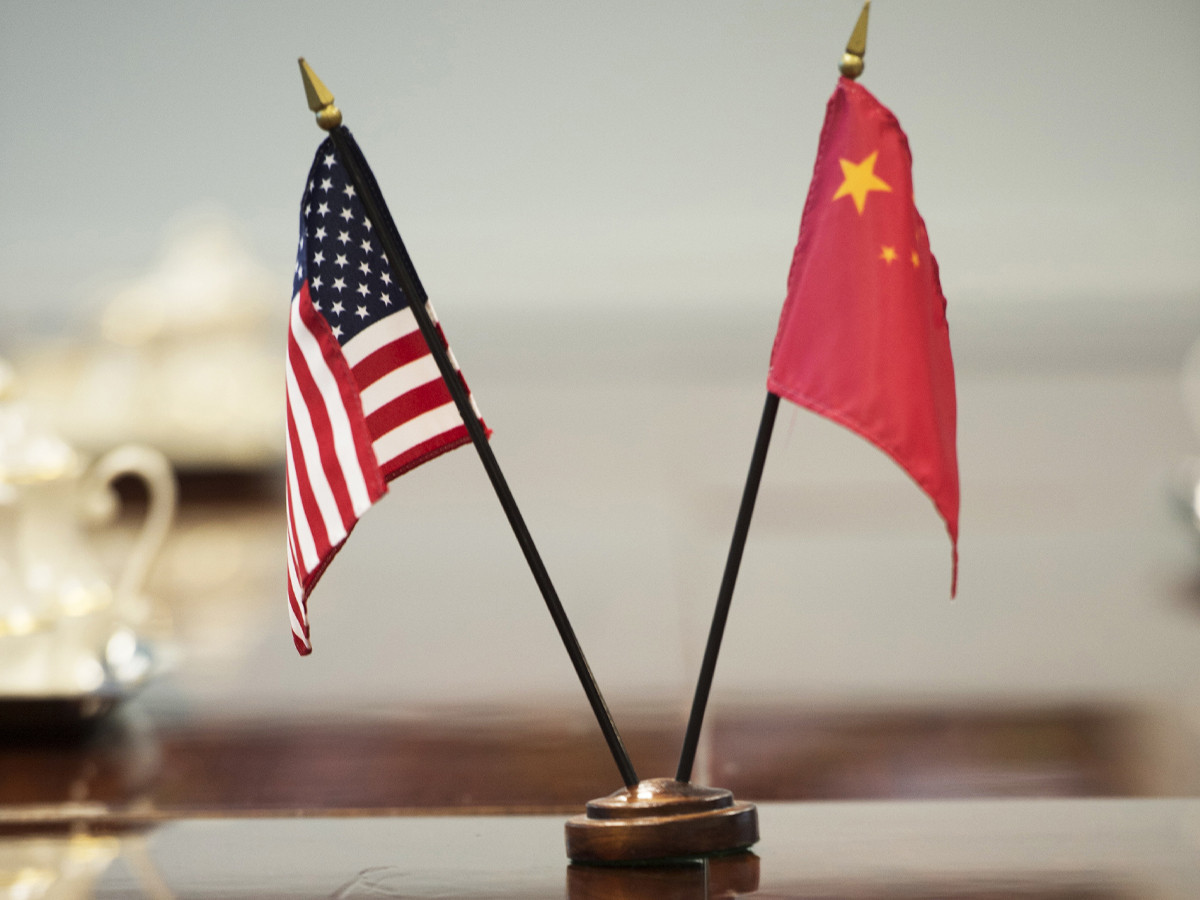Leverage And Patience: Canada's Approach To US Trade Negotiations

Table of Contents
Historical Context: Understanding the Dynamics of Canada US Trade Negotiations
The history of trade agreements between Canada and the US is a long and complex one, marked by periods of both intense cooperation and significant friction. Understanding this history is crucial to grasping the nuances of current Canada US trade negotiations.
-
The Evolution of Trade Agreements: Early bilateral agreements gradually evolved into broader North American frameworks. The Auto Pact of 1965, for example, focused on automotive trade, laying the groundwork for more comprehensive agreements. This paved the way for the landmark Canada-United States Free Trade Agreement (CUSFTA) in 1989, which was then superseded by the North American Free Trade Agreement (NAFTA) in 1994. NAFTA, in turn, underwent significant renegotiation, resulting in the United States-Mexico-Canada Agreement (CUSMA or USMCA) in 2020.
-
Key Turning Points and Challenges: This journey hasn't been without its challenges. The long-running softwood lumber dispute, for instance, highlights the complexities and potential for contention even within a strong trading relationship. These disputes often involve allegations of unfair trade practices and countermeasures from both sides. Political shifts in either country also significantly impact the negotiating landscape. Changes in administrations and evolving domestic priorities can drastically alter the negotiating environment and priorities.
Canada's Leverage in Trade Negotiations with the US
Canada possesses several key sources of leverage in its trade negotiations with the US. Effectively utilizing this leverage is crucial for securing favorable outcomes.
-
Economic Interdependence: The US and Canada are deeply economically intertwined. Canada is a major trading partner for the US, providing significant access to natural resources and manufactured goods. This interdependence provides Canada with a significant bargaining chip. Any disruption to this flow of goods and services significantly impacts both economies, making compromise crucial.
-
Political Relationships: Strong bipartisan support for trade in both countries is essential for successful negotiations. While political landscapes may shift, a consistent, long-term view toward maintaining a positive trade relationship is beneficial for both countries.
-
International Alliances: Canada’s active role in multilateral trade agreements, such as the WTO, provides additional leverage. By working with other countries on shared trade concerns, Canada can strengthen its negotiating position and potentially build a united front against protectionist measures.
-
Specific Examples of Leverage:
- Countermeasures: Canada has, on occasion, employed countermeasures in response to perceived unfair trade practices from the US, like tariffs on certain goods.
- Strategic Alliances: Canada's alliances with other countries can be leveraged to create alternative trade routes and reduce dependence on the US market.
- Public Opinion and Media Campaigns: Shaping public opinion in both countries through targeted media campaigns can influence the political will to reach mutually beneficial agreements.
The Importance of Patience in Canada US Trade Negotiations
A patient approach is paramount in Canada US trade negotiations. Trade agreements are inherently complex, requiring meticulous attention to detail and a long-term perspective.
-
Complex Nature of Agreements: Negotiating trade deals involves countless intricate details, technical specifications, and legal considerations, all of which take time to address adequately.
-
Long-Term Strategic Planning: Focusing solely on short-term gains can jeopardize long-term interests. A patient strategy considers the lasting impacts of agreements on various sectors and the overall bilateral relationship.
-
Navigating Shifting Priorities: Political priorities and economic conditions can shift rapidly. A patient approach allows for adaptation and flexibility in the face of unexpected changes.
-
Benefits of Patience:
- More Favorable Terms: Patience often leads to securing better terms in the long run, avoiding rushed compromises that could prove detrimental.
- Stronger Relationships: A patient approach fosters trust and builds stronger, more resilient trade relationships based on mutual respect and understanding.
- Avoiding Impulsive Decisions: Patience helps to avoid impulsive decisions driven by short-term pressures that could have negative long-term consequences.
Case Study: CUSMA Negotiations – A Testament to Patience and Leverage
The CUSMA (USMCA) negotiations serve as a prime example of both leverage and patience in action. The renegotiation of NAFTA proved a lengthy and challenging process, marked by disagreements over issues like dairy quotas and dispute resolution mechanisms. However, through persistent diplomacy and strategic use of its leverage, Canada secured a deal that largely protected its interests. This demonstrates that a combination of careful planning and a steadfast approach can lead to a successful outcome, even in the face of significant challenges.
Future Challenges and Opportunities in Canada US Trade Negotiations
The future of Canada US trade negotiations will undoubtedly be shaped by evolving global dynamics.
-
Emerging Issues:
- Technological Advancements: Rapid technological advancements require adapting trade rules to address issues like digital trade, data privacy, and intellectual property rights.
- Rise of Protectionism: The rise of protectionist sentiments and trade wars globally presents significant risks to the Canada-US trading relationship.
- Climate Change: Climate change and sustainability will inevitably become more prominent factors in shaping future trade negotiations, impacting industries and supply chains.
-
Strategies for Future Negotiations:
- Collaboration and Shared Interests: Focusing on areas of mutual benefit and collaboration can help to overcome disagreements and build stronger partnerships.
- Adaptability: The ability to adapt to shifting global dynamics and changing circumstances will be essential for future success.
- Strengthening Partnerships: Strengthening both bilateral and multilateral partnerships can enhance negotiating power and resilience.
Conclusion
Canada's approach to US trade negotiations hinges on a careful balance between leveraging its economic and political strengths and exercising the patience necessary to achieve long-term strategic goals. The CUSMA negotiations provide a strong case study demonstrating the effectiveness of this strategy. Understanding the dynamics of Canada US trade negotiations is crucial for both nations. By analyzing past successes and challenges, we can better prepare for future collaborations and ensure a mutually beneficial trading relationship. Further research into the complexities of Canada US trade negotiations is encouraged to foster a deeper understanding of this vital partnership.

Featured Posts
-
 Fed Snapshot Reveals The Economic Fallout Of A Canadian Travel Boycott
Apr 27, 2025
Fed Snapshot Reveals The Economic Fallout Of A Canadian Travel Boycott
Apr 27, 2025 -
 Kanopy Discover Hundreds Of Free Movies And Tv Shows
Apr 27, 2025
Kanopy Discover Hundreds Of Free Movies And Tv Shows
Apr 27, 2025 -
 The Funeral Of Pope Benedict Trumps Attendance And The Blend Of Politics And Faith
Apr 27, 2025
The Funeral Of Pope Benedict Trumps Attendance And The Blend Of Politics And Faith
Apr 27, 2025 -
 Hhs Controversy Anti Vaccine Advocate To Investigate Debunked Autism Vaccine Connection
Apr 27, 2025
Hhs Controversy Anti Vaccine Advocate To Investigate Debunked Autism Vaccine Connection
Apr 27, 2025 -
 Planning For A Happy Day On February 20 2025
Apr 27, 2025
Planning For A Happy Day On February 20 2025
Apr 27, 2025
